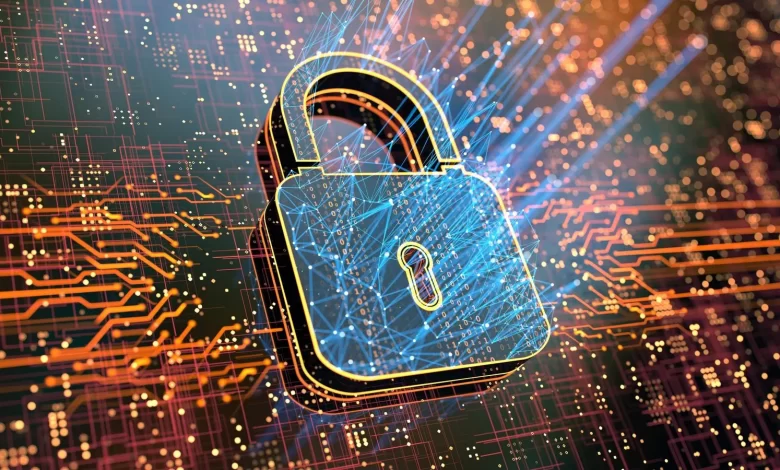The Progression of Crypto Wallet Security: Shifting from Hardware to Biometrics

In the ever-evolving world of cryptocurrency, security has always been a paramount concern for investors and traders. From the early days of crypto wallets stored on USB drives to the latest in biometric authentication, the landscape of safeguarding digital assets has come a long way. This article explores the fascinating journey of crypto wallet security, highlighting the pivotal role played by innovations. For more information, visit website https://thebitcoincode.io .
Table of Contents
A New Era of Crypto Security
An online trading platform that prides itself on its commitment to user security has been at the forefront of implementing cutting-edge technologies. Its unwavering focus on safety and the protection of digital assets has contributed significantly to the evolving world of crypto wallet security.
The Genesis: Hardware Wallets
In the early days of cryptocurrency, security primarily revolved around hardware wallets. These physical devices provided an offline means of storing digital assets, protecting them from online threats. They were, and still are, a viable option for long-term investors who prefer a “cold” storage solution. However, the limitations of hardware wallets became evident as the crypto landscape expanded.
Pros:
- Offline storage for enhanced security.
- Protection from online hacks and malware.
- Ideal for long-term investment.
Cons:
- Inconvenient for active traders.
- Risk of loss or damage to the physical device.
- Limited accessibility.
The Rise of Software Wallets
The need for more accessible and versatile wallet solutions gave rise to software wallets. These wallets, also known as “hot wallets,” can be installed on various devices, making it easier for users to manage their crypto assets. However, this convenience came at a price – increased vulnerability to online threats.
Pros:
- Convenient and versatile, accessible from various devices.
- Easy to use and suitable for active trading.
- A wide range of options, from desktop to mobile wallets.
Cons:
- Greater susceptibility to online threats like phishing and malware.
- Not recommended for storing large amounts of cryptocurrency.
Biometric Wallets: The Game-Changer
The introduction of biometrics into crypto wallet security has been a game-changer. With biometric authentication, users can now access their wallets through fingerprint or facial recognition. This technology adds an extra layer of security by making it nearly impossible for unauthorized individuals to gain access to your digital assets.
Pros:
- Strong, user-specific security through biometric data.
- Enhanced protection against unauthorized access.
- Combines convenience with security.
Cons:
- Biometric data could potentially be compromised, although the risk is minimal.
- Limited to devices with biometric sensors.
The Pinnacle of Security
As the world of cryptocurrency continued to evolve, the online trading platform seized the opportunity to push the boundaries of security. Through constant innovation and a commitment to providing the best security features, they have achieved a level of trust and reliability that sets them apart.
Cutting-Edge Security Features:
- Biometric Authentication: Online platform incorporates biometric authentication into their platform, making it nearly impervious to unauthorized access. Users can enjoy the convenience of quick and secure logins through fingerprint or facial recognition.
- Two-Factor Authentication (2FA): In addition to biometrics, 2FA adds another layer of security. Users can choose to receive an SMS code or use a time-based one-time password (TOTP) for an extra level of protection.
- Cold Wallet Storage: For those who prefer to keep their assets in cold storage, online platforms offer integrated hardware wallet compatibility. This feature ensures a high level of security for long-term investors.
- Encrypted Communication: All data transmitted between users and the platform is encrypted, safeguarding against eavesdropping and man-in-the-middle attacks.
- Continuous Monitoring: Real-time monitoring and alerts for unusual activities on the platform add an extra layer of security, allowing online platform to detect and respond to potential threats promptly.
The Road Ahead
The journey of crypto wallet security has been an exciting one, with each phase bringing new advancements and challenges. As the crypto space continues to expand, it’s essential for traders and investors to stay informed and adapt to the latest security measures.
- Biometrics and Beyond: While biometric authentication has significantly enhanced security, the future may hold even more advanced methods, such as voice recognition or retina scans, for added protection.
- Education and Awareness: Security is a shared responsibility. It’s crucial for users to stay informed about the latest security threats and best practices. Online trading platforms often provide resources and guides to help users protect their assets.
- Regulation and Compliance: As the cryptocurrency industry matures, governments and regulatory bodies are likely to impose more stringent security requirements on trading platforms and wallet providers. This can further enhance the safety of digital assets.
Conclusion
The evolution of crypto wallet security, from hardware wallets to biometrics, has been a remarkable journey. Innovations like the Crypto Loophole online trading platform have been instrumental in raising the bar for security in the cryptocurrency space. While the landscape continues to evolve, one thing remains constant – the paramount importance of safeguarding your digital assets in an ever-changing digital world. Embracing the latest in security measures and staying informed is the key to a safer and more secure crypto experience.




